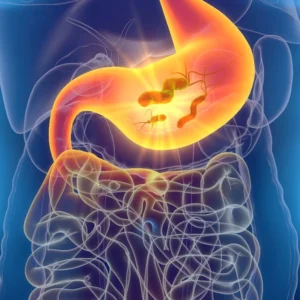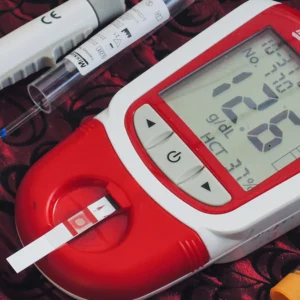Tonsillitis is an inflammation of the tonsils. It can affect anyone. The throat starts to hurt, swallowing becomes difficult, and fever rises. The illness can be acute, chronic, or catarrhal, and each form has its own characteristics. It’s important to recognize the disease early to prevent complications.
What Is Tonsillitis and What Causes It?
Tonsillitis is an inflammation of the tonsils, which are located in the throat. They are part of the immune system and protect the body from infections. However, sometimes the tonsils themselves become a target for bacteria or viruses.
Why Does Inflammation Occur? Here Are the Main Causes:
- Viral infections (common cold, flu, Epstein-Barr virus).
- Bacterial infections (most commonly streptococcus).
- Weakened immune system.
- Exposure to cold or drinking cold beverages.
- Chronic nasal and throat conditions (rhinitis, sinusitis).
Tonsillitis is not just a sore throat. It needs to be recognized and treated on time, or complications may arise.
Types of Tonsillitis and Their Characteristics
Tonsillitis comes in different forms. It can be acute, chronic, or catarrhal:
- Acute (Strep Throat). This is the most common form. It starts suddenly with severe throat pain, difficulty swallowing, and high fever. The tonsils enlarge, and white patches or pus-filled spots may appear. It’s often accompanied by weakness, headaches, and swollen lymph nodes.
- Chronic. This form develops if strep throat is not fully treated. Symptoms are milder, but the illness lingers. The tonsils remain enlarged, and there is a constant sensation of something stuck in the throat. Bad breath is common. It flares up with cold exposure or a weakened immune system.
- Catarrhal. This is a milder form, usually caused by viral infections. Symptoms are less severe: the throat is red and irritated, but there is no pus. The fever may be low or absent. If left untreated, it can develop into a more severe form.
How Do You Know If You Have Tonsillitis? If your throat hurts for more than 3-4 days, you have a high fever, white patches on the tonsils, or constant discomfort, you should see a doctor.

Main Symptoms of Tonsillitis
Tonsillitis symptoms vary depending on the type, but some signs are common to all forms.
General Symptoms for All Types:
- Throat pain that worsens when swallowing.
- Red and swollen tonsils.
- Feeling of something stuck in the throat.
- Overall weakness and fatigue.
- Swollen lymph nodes in the neck.
Symptoms of Acute Tonsillitis (Strep Throat):
- Sudden onset, severe throat pain.
- High fever (100.4–104°F / 38–40°C).
- White patches or pus on the tonsils.
- Chills, body aches.
- Headache, loss of appetite.
Symptoms of Chronic Tonsillitis:
- Persistent bad breath.
- Frequent sore throats or constant throat discomfort.
- Feeling of a lump in the throat.
- Mild pain or irritation lasting a long time.
- Increased fatigue and reduced productivity.
Symptoms of Catarrhal Tonsillitis:
- Milder throat pain.
- Red tonsils, but no pus.
- Low or normal fever.
- General discomfort and weakness.
When Should You See a Doctor?
If your sore throat lasts more than 4 days, you see pus, or your fever doesn’t go down, you need medical attention. Frequent strep throat episodes should not be ignored, as they can become chronic.

Tonsillitis Diagnosis
To confirm the diagnosis, a doctor will examine you and may order tests. Self-diagnosis is difficult because symptoms can resemble other throat conditions.
Key Diagnostic Methods:
- Doctor’s examination. An ENT specialist will check the tonsils. If they are swollen, red, or covered in pus, it indicates tonsillitis. The doctor will also check neck lymph nodes and overall condition.
- Throat swab test. This is one of the most important tests. It identifies whether bacteria or viruses are causing the illness. If the cause is bacterial (such as streptococcus), antibiotics are required.
- Complete blood count (CBC). This test detects inflammation. High white blood cell counts and ESR levels indicate an infection.
Additional tests like ultrasound or CT scans may be needed in complicated cases.
If you have a sore throat, don’t ignore it! Seeing a doctor early can prevent serious complications.
Don’t Self-Medicate! Only a doctor can accurately determine the cause of your illness and prescribe the right treatment. Antibiotics are not always necessary, as viral infections require different treatments.
How to Gargle for Acute Tonsillitis – Video
Acute tonsillitis or strep throat is a common illness. How should you treat it? What should you use for gargling? Watch the video:
Conclusion
Tonsillitis is a serious condition that should not be ignored. It’s important to recognize its types and seek medical attention at the first symptoms. Self-treatment can lead to complications. To prevent tonsillitis, strengthen your immune system and take care of your throat. If you feel pain – don’t wait, take action!
FAQs
It usually lasts 3-10 days, depending on the cause.
Drink plenty of fluids, gargle, and take pain relievers. If it’s bacterial, see a doctor for antibiotics.
Pharyngitis causes throat pain and a cough, while tonsillitis involves swollen tonsils, white patches, and a high fever.












